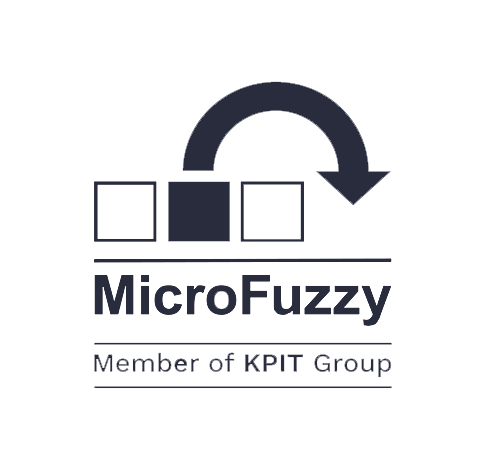Ihr Kunde fordert von Ihnen ein Automotive SPICE® Assessment oder Ihre Entwicklungsprozesse laufen gerade aus dem Ruder?
Wir erklären, warum Assessments notwendig sind und wie wir Sie dabei unterstützen können.
Knowledge Base
Warum werden Assessments durchgeführt?
Hier gibt es mehrere wichtige Gründe für Kunde und Lieferant:
Qualitätssicherung
Assessments helfen, die Qualität und Reife der Entwicklungsprozesse in der Automobilindustrie zu bewerten und sicherzustellen. Dies ist besonders wichtig angesichts der steigenden Komplexität von Fahrzeugsoftware und -systemen.
Risikominimierung
Durch die Bewertung und Verbesserung der Prozesse können potenzielle Risiken in der Entwicklung frühzeitig erkannt und minimiert werden.
Wettbewerbsvorteil
Eine erfolgreiche Automotive SPICE® (ASPICE®)-Zertifizierung kann einen Wettbewerbsvorteil darstellen, da viele Automobilhersteller dies von ihren Zulieferern fordern
Prozessoptimierung
Assessments decken Schwachstellen in den Entwicklungsprozessen auf und bieten die Möglichkeit zur gezielten Verbesserung.
Standardisierung
Automotive SPICE® bietet einen einheitlichen Standard zur Bewertung von Entwicklungsprozessen in der Automobilindustrie, was die Zusammenarbeit und Vergleichbarkeit zwischen Unternehmen erleichtert.
Kundenanforderungen
Viele Automobilhersteller verlangen von ihren Zulieferern regelmäßige ASPICE®-Assessments als Nachweis für SPICE®-konformes Arbeiten.
Kontinuierliche Verbesserung
Regelmäßige Assessments fördern eine Kultur der kontinuierlichen Verbesserung in Unternehmen.
Erfüllung von Branchenstandards
Automotive SPICE® hilft Unternehmen, die hohen Qualitäts- und Sicherheitsanforderungen der Automobilindustrie zu erfüllen.
Unser Angebot im Überblick
Alles aus einer Hand
Als mittelständisches Unternehmen bieten wir Ihnen umfassende Automotive SPICE® Assessments bis zur aktuellen Version 4.0 inklusive Cybersecurity Erweiterung an. Unser Expertenteam deckt dabei alle Prozesse des Automotive SPICE® Modells ab und unterstützt Sie bei der Verbesserung Ihrer Entwicklungsprozesse im Automobilbereich.
Durchführung von Automotive SPICE® Assessments bis V4.0 inkl. Cybersecurity Erweiterung
Assessierung aller Prozesse des V-Modells wie SYS, SWE, MAN etc. möglich
Erfahrene und zertifizierte Assessoren
Maßgeschneiderte Lösungen für Unternehmen jeder Größe
Detaillierte Analyse und Bewertung Ihrer Prozesse
Konkrete Handlungsempfehlungen zur Prozessoptimierung
Durch unsere strukturierte Vorgehensweise und langjährige Erfahrung gewährleisten wir eine gründliche und objektive Bewertung Ihrer Prozesse. Unser Ziel ist es, Ihnen nicht nur eine Momentaufnahme zu liefern, sondern Sie auch auf Ihrem Weg zur kontinuierlichen Prozessverbesserung zu unterstützen.
Kontaktieren Sie uns noch heute, um mehr über unsere Automotive SPICE® Assessments zu erfahren und gemeinsam den ersten Schritt zur Optimierung Ihrer Entwicklungsprozesse zu gehen.

Kontakt
Fleckner + Simonpersönlich
Lernen Sie die Köpfe hinter F+S kennen, nehmen Sie direkt Kontakt zu uns auf, vereinbaren Sie einen direkten Termin mit uns oder folgen Sie uns auf LinkedIn.
Ablauf eines Automotive SPICE® Assessments
Die für Auftraggeber relevante Interview-Phase eines typischen ASPICE® Assessments dauert in der Regel zwischen 4 und 6 Tagen. Für komplexere Assessments, die mehrere Business Units, Standorte oder Organisationseinheiten umfassen, kann die Dauer auch länger sein. In jedem Fall ist eine sorgfältige Planung und Vorbereitung wichtig, um den Aufwand für alle Beteiligten zu optimieren und aussagekräftige Ergebnisse zu erzielen.
Die genaue Dauer hängt von verschiedenen Faktoren ab:
Umfang des Assessments, der zu prüfenden Prozesse und Capability Level
Größe und Komplexität der zu untersuchenden Organisation/ des Projektes
Erfahrung des Assessment-Teams
Verfügbarkeit von Dokumenten und Interviewpartnern
Phasen des Assessment Prozesses
1. Vorbereitung und Planung
Auch wenn diese Phase nicht immer vor Ort stattfindet, ist sie dennoch zeitaufwändig. Sie beinhaltet:
- Festlegung des Assessment-Umfangs und der zu assessierenden Prozesse
- Detaillierte Planung des Ablaufs
- Sichtung und Analyse der bereitgestellten Unterlagen
- Vorbereitung des Assessment Reports und Fragebögen
Die Vorbereitungsphase kann mehrere Tage bis Wochen dauern, abhängig von der Größe und Komplexität des zu bewertenden Unternehmens oder Projekts. Ein Kick-off Meeting zum gegenseitigen Kennenlernen kann hilfreich sein.
2. Durchführung vor Ort
Die Dauer dieser Phase beträgt typischerweise 4-6 Tage, kann aber je nach Umfang des Assessments auch länger sein. Sie umfasst:
-
- Interviews und Workshops mit Schlüsselpersonen aus verschiedenen Abteilungen
-
- Tiefgehende Analyse der Prozesse und ihrer praktischen Umsetzung
-
- Dokumentenanalyse und -bewertung
-
- Bewertung und Konsolidierung der Ergebnisse – in der Regel zwischen den Interview-Sessions
-
- Abschlusspräsentation mit Vorstellung der Ergebnisse und Diskussion von Stärken und Verbesserungspotentialen
3. Assessment Report
Als Ergebnis unserer gemeinsamen Arbeit übergeben wir am Schluss einen detaillierten Assessment Report. Er enthält:
- Detaillierte schriftliche Dokumentation der Ergebnisse
- Konkrete Handlungsempfehlungen zur Prozessverbesserung
Nach Abschluss des Assessments werden die von den Assessoren erbrachten Leistungen und bewerteten Prozesse im Rahmen eines Assessment-Logs dokumentiert.
Die Ergebnisse des Assessments werden weder an den VDA, intacs® noch an eine andere Institution weitergeleitet, sondern ausschließlich an den Auftraggeber / Sponsor übergeben.
Wie geht es weiter?
Nach Abschluss des Assessments können wir Ihnen gern weiterhin behilflich sein:
Erstellung eines Verbesserungsplans
- Basierend auf den Empfehlungen wird ein konkreter Aktionsplan entwickelt.
- Dieser legt fest, welche Prozesse wie und bis wann verbessert werden sollen.
Umsetzung der Verbesserungsmaßnahmen
- Die geplanten Maßnahmen werden systematisch umgesetzt.
- Dies kann Prozessanpassungen, Schulungen oder Änderungen in der Arbeitsweise beinhalten.
- Ein Team von Entwicklern kann mit Engineering Dienstleistungen unterstützend tätig werden.
Kontinuierliche Überwachung und Anpassung
- Die Fortschritte bei der Umsetzung der Verbesserungsmaßnahmen werden regelmäßig überprüft.
- Bei Bedarf werden Anpassungen vorgenommen.
Sprechen Sie uns an! Wir unterstützen Sie gern bei der Durchführung Ihrer Assessments!
Gefragte Ansprechpartner
Assessments durch die Automobilhersteller bestätigen unsere Ansätze. Auch bei Treffen der ASPICE® Assessoren erhalten wir Anerkennung für unsere pragmatischen Lösungen. Unser Know-how bei der Umsetzung von Prozessen und zur Lösung entsprechender Probleme ist auch auf Konferenzen und Kongressen gefragt – beispielhafte Veranstaltungen und Themen: CONQUEST: „Projektplanung“, EuroSPI: „Risikomanagement“, VDA Automotive SYS, „intacs™ Cybersecurity SPICE®“.
Stets gut beraten
Beratung ist ein weites Feld. Wir unterstützen unsere Kunden mit Management-Beratung, Assessment-Durchführung, Prozessverbesserungen und Qualitätssicherung. Vor allem im Bereich Safety, der „funktionalen Sicherheit“ von Automotive Software, und Security, dem Schutz vor externen Angriffen, besitzen wir viel Erfahrung.
Fleckner + Simon engagiert sich als unabhängiges Unternehmen im Bereich Embedded Software Engineering – miteinander ergänzenden Leistungen: Wir entwickeln Software-Module für komplexe technische Systeme oder individuelle Tools zur Vereinfachung der Entwicklung. Wir helfen unseren Kunden als Berater, effiziente Entwicklungsprozesse zu gestalten.
Insbesondere bei den komplexen Themen Safety und Security haben sowohl unsere Berater als auch unsere Entwickler das notwendige Know-How und Verantwortungsbewusstsein.























